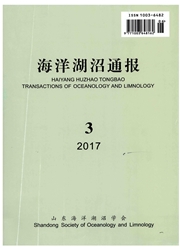

 中文摘要:
中文摘要:
用小麦岛和团岛观测站提供的青岛近海气象和水温资料,以适于SO2气体和硫酸盐(SO4^2-)气溶胶的干沉降模型研究了模型中的输送阻尼对两种污染物质干沉降速率的贡献,并计算了2003年青岛近海地区两种污染物质干沉降速率的季节变化。结果表明:对SO2而言,粘性副层传输系数对沉降速率的贡献大于空气动力学传输系数;对于SO4^2-,空气动力学传输系数对沉降速率的贡献要大于表面传输系数。SO2和SO4^2-的干沉降速率变化范围分别为0.187~0.868cm/s和0.188~0.532cm/s。两种污染物质干沉降速率的四季变化有相似的规律。即冬季〉秋季〉春季〉夏季。
 英文摘要:
英文摘要:
The dry deposition velocities of SO2 and SO4^2- in the coastal area of Qingdao in 2003 were calculated using models appropriate to each species of the contaminants, and the contributions of the transfer resistances to the dry deposition were also evaluated. The results showed that the contribution of the sublayer transfer coefficient for SO2 dry deposition was larger than that of the aerodynamic transfer coefficient and the aerodynamic transfer coefficient played a more important role in the deposition of SO4^2- than the surface transfer coefficient. The dry depositions of SO2and SO4^2- varied in the range of 0. 187-0. 868 em/s and 0. 188-0. 532 cm/s, respectively. The minimum values for both SO2 and SO4^2- occurred in July, which were 0. 188 and 0. 187cm/s, respectively. These values showed good agreement with the field measurements.
 同期刊论文项目
同期刊论文项目
 同项目期刊论文
同项目期刊论文
 期刊信息
期刊信息
